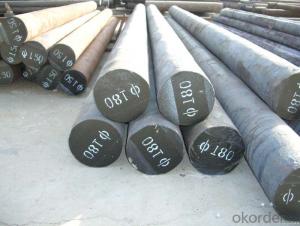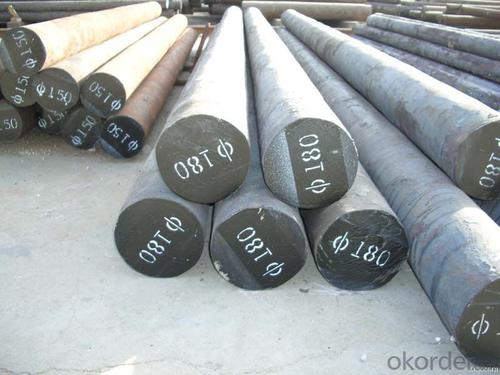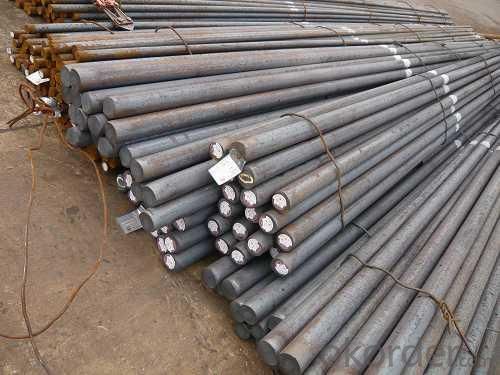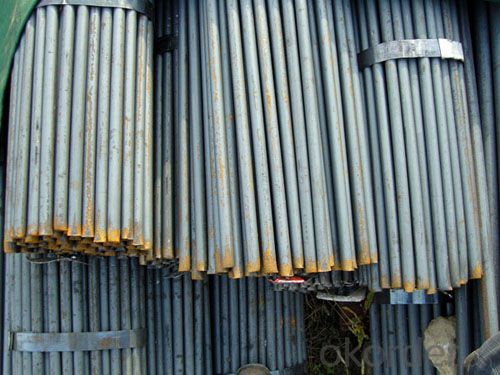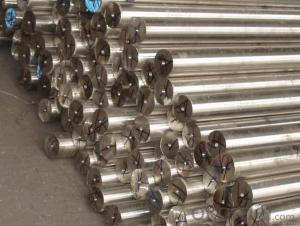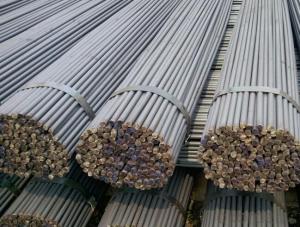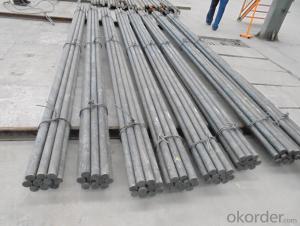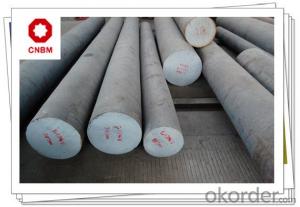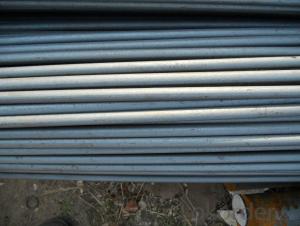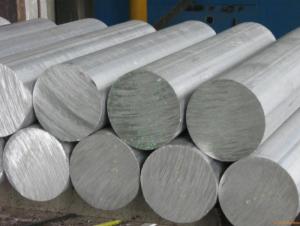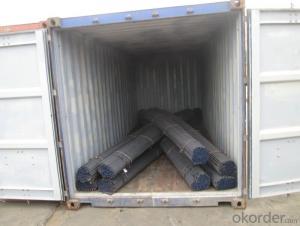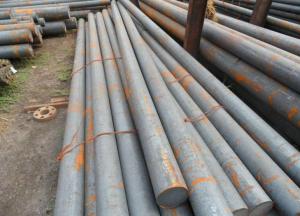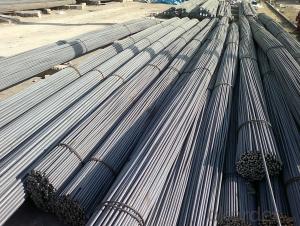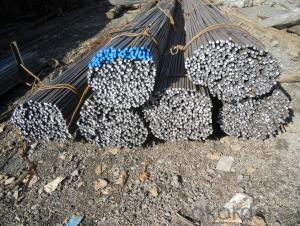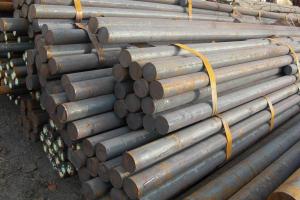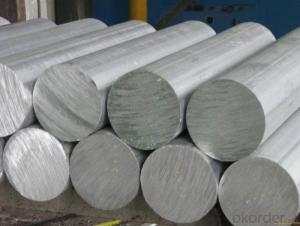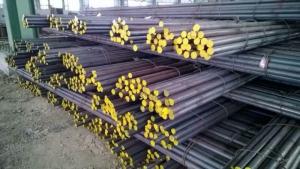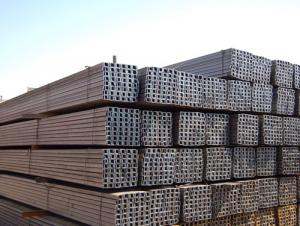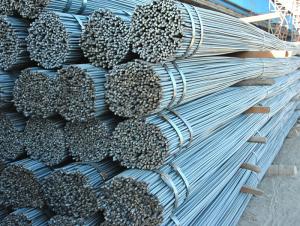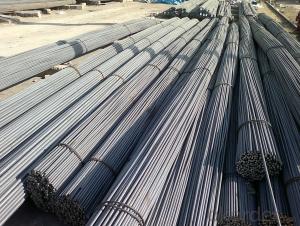Hot Selling Hot Rolled ROUND BAR With Various Materials
- Loading Port:
- Tianjin
- Payment Terms:
- TT or LC
- Min Order Qty:
- 30 m.t.
- Supply Capability:
- 50000 m.t./month
OKorder Service Pledge
OKorder Financial Service
You Might Also Like
Specifications
ROUND BAR (S45C,S20C,SS400,A36)
1.Length:6m to 12m
2.Grade:Q235/SS400/S20C/S45C
Remarks:
1.Origin / Manufacturer: China
2.Port of Loading: Tianjin Port,China
3.Packing Term: Bulk Packing Or Container
4.Measurement of Weight: By Theoretical Weighting
5.Certificate:ISO9001,CIC,BV,SGS
FAQ:
Q1: Why buy Materials & Equipment from OKorder.com?
A1: All products offered byOKorder.com are carefully selected from China's most reliable manufacturing enterprises. Through its ISO certifications, OKorder.com adheres to the highest standards and a commitment to supply chain safety and customer satisfaction.
Q2: How do we guarantee the quality of our products?
A2: We have established an advanced quality management system which conducts strict quality tests at every step, from raw materials to the final product. At the same time, we provide extensive follow-up service assurances as required.
Q3: How soon can we receive the product after purchase?
A3: Within three days of placing an order, we will begin production. The specific shipping date is dependent upon international and government factors, but is typically 7 to 10 workdays.
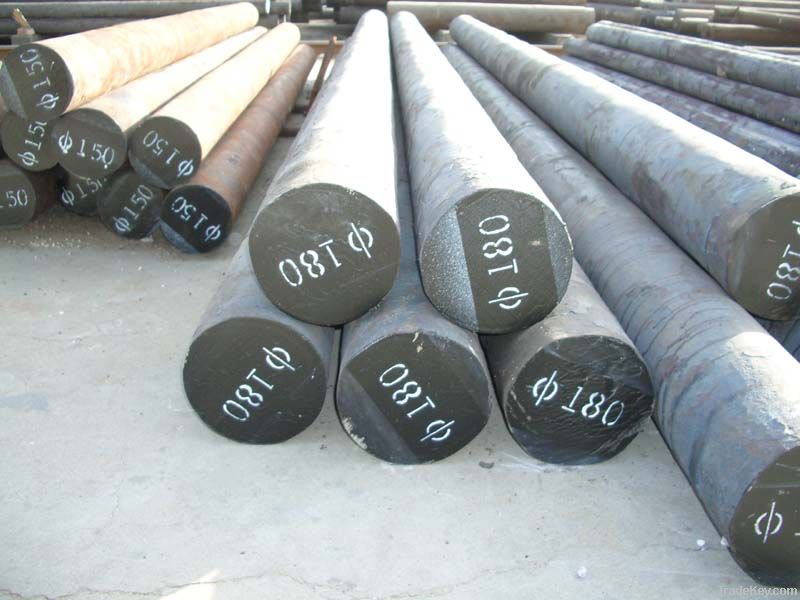
- Q: What is the tensile strength of steel round bars?
- The tensile strength of steel round bars can vary depending on the specific grade or type of steel being used. However, on average, steel round bars have a tensile strength ranging from 400 to 500 megapascals (MPa). This means that steel round bars can withstand a pulling or stretching force of 400 to 500 MPa before experiencing permanent deformation or fracture. It is important to note that different grades of steel, such as mild steel, carbon steel, or alloy steel, may have different tensile strength values. Additionally, factors such as heat treatment, manufacturing process, and size of the round bar can also affect its tensile strength. Therefore, it is recommended to consult the specific manufacturer or supplier for accurate and precise information on the tensile strength of a particular steel round bar.
- Q: How do steel round bars compare to aluminum or steel tubing?
- Steel round bars, aluminum tubing, and steel tubing all have their own unique properties and applications, so it is important to understand the characteristics of each material before making a comparison. Steel round bars are solid cylindrical bars made of steel. They are known for their high strength and durability, making them suitable for heavy-duty applications. Steel round bars have excellent tensile strength and can withstand high levels of stress and pressure. They are often used in construction, manufacturing, and engineering projects where strength and structural integrity are crucial. Steel round bars are also highly resistant to corrosion, making them suitable for outdoor and marine applications. Aluminum tubing, on the other hand, is made from aluminum, which is a lightweight and corrosion-resistant material. Aluminum tubing is known for its excellent thermal conductivity and electrical conductivity. It is often used in applications where weight reduction is important, such as in the aerospace and automotive industries. Aluminum tubing is also commonly used in the construction of heat exchangers and in electrical wiring systems due to its conductivity properties. Steel tubing, similar to steel round bars, is made of steel but is hollow in shape. Steel tubing is known for its versatility and wide range of applications. It is available in various shapes and sizes, including round, square, and rectangular, allowing for different structural designs. Steel tubing is often used in construction, automotive manufacturing, and industrial applications. It offers high strength and rigidity, making it suitable for applications that require structural support or the ability to withstand heavy loads. In comparison, steel round bars offer superior strength and durability compared to aluminum and steel tubing. They are ideal for heavy-duty applications that require high levels of strength and structural integrity. However, steel round bars can be heavier and more expensive than aluminum tubing, which is often preferred for lightweight applications. Steel tubing, on the other hand, provides versatility in terms of shape and size, allowing for more design options. Ultimately, the choice between steel round bars, aluminum tubing, and steel tubing depends on the specific requirements of the application, including factors such as strength, weight, cost, and corrosion resistance. It is important to carefully evaluate these factors and consult with experts to determine the most suitable material for a particular project.
- Q: Can steel round bars be used for gear applications?
- Yes, steel round bars can be used for gear applications. Steel round bars are often used for manufacturing gears due to their high strength, durability, and ability to withstand heavy loads and wear. They can be machined and heat-treated to meet specific gear requirements, making them a suitable choice for various gear applications in industries such as automotive, machinery, and manufacturing.
- Q: How are steel round bars used in the manufacturing of hydraulic systems?
- Due to their strength, durability, and versatility, steel round bars are widely used in the manufacturing of hydraulic systems. These bars serve multiple purposes in the construction and assembly of hydraulic components. One primary application of steel round bars in hydraulic systems is for fabricating piston rods. Piston rods are crucial components of hydraulic cylinders that transfer the force generated by the hydraulic fluid to the desired mechanism. The high strength and rigidity of steel round bars make them ideal for this purpose, as they can withstand the intense pressure and stress exerted on the piston rod during operation. Steel round bars are also utilized in manufacturing shafts and axles within hydraulic systems. These components transmit rotational motion and torque from the hydraulic pump to other mechanical parts, such as gears or pulleys. By using steel round bars, manufacturers can ensure the reliability and longevity of these critical parts, as they possess excellent mechanical properties and resistance to wear and tear. Moreover, steel round bars are often employed in constructing hydraulic fittings and connectors. These components join different hydraulic pipes, hoses, or valves together, creating a sealed system for fluid transmission. Steel round bars provide the necessary strength and stability to withstand the high-pressure conditions within hydraulic systems, ensuring leak-free operation and efficient fluid transfer. In conclusion, steel round bars play a vital role in the manufacturing of hydraulic systems by providing strength, durability, and versatility. Their use in piston rods, shafts, axles, fittings, and connectors ensures the proper functioning and reliability of these systems.
- Q: What is the maximum length of a steel round bar that can be manufactured?
- Several factors determine the maximum length of a steel round bar that can be produced. These factors include the bar's diameter or thickness and the limitations of the manufacturing process. Steel round bars typically range in length from a few feet to several hundred feet, or even longer. However, it is worth noting that as the bar's length increases, maintaining its straightness and dimensional accuracy becomes more challenging. This is especially true for thinner or larger diameter bars, as they are more prone to bending or warping during manufacturing. Moreover, logistical constraints such as transportation and handling can also impose limitations on the maximum length of a steel round bar that can be efficiently manufactured and delivered. Therefore, the maximum length of a steel round bar that can be produced is not a fixed value. Instead, it depends on various factors related to the specific requirements, capabilities, and limitations of the manufacturer, as well as the intended application for the bar.
- Q: What are the advantages of using aluminum-alloy steel round bars?
- There are several advantages of using aluminum-alloy steel round bars. Firstly, aluminum-alloy steel round bars offer excellent strength-to-weight ratio. The combination of aluminum and steel provides a lightweight yet strong material, making it suitable for various applications. This advantage is particularly important in industries such as aerospace and automotive, where weight reduction is crucial for fuel efficiency and performance. Secondly, aluminum-alloy steel round bars have high corrosion resistance. Aluminum forms a protective oxide layer when exposed to air, which prevents further corrosion. This property makes them suitable for outdoor applications or environments where exposure to moisture or chemicals is common. Additionally, aluminum-alloy steel round bars are highly malleable and can be easily machined or formed into different shapes. This versatility allows for the production of complex parts and components, making them ideal for industries such as construction and manufacturing. Furthermore, aluminum-alloy steel round bars have excellent thermal and electrical conductivity. This makes them a preferred choice for applications that require heat dissipation or electrical conduction, such as heat sinks or electrical connectors. Lastly, aluminum-alloy steel round bars are highly recyclable. Aluminum is one of the most recycled materials in the world, with a recycling rate of over 90%. This not only reduces the environmental impact but also offers cost savings in material sourcing. In summary, the advantages of using aluminum-alloy steel round bars include their excellent strength-to-weight ratio, high corrosion resistance, malleability, thermal and electrical conductivity, and recyclability. These properties make them a valuable choice for a wide range of applications in various industries.
- Q: How do you determine the straightness of a steel round bar?
- There are several methods available to determine the straightness of a steel round bar. One commonly used technique involves visually inspecting the bar for any visible bends, twists, or deviations from a straight line. This involves placing the bar on a flat surface and checking for gaps or unevenness between the bar and the surface. Another method involves utilizing a straightedge or precision ruler. By placing either of these tools along the length of the bar, any deviations from a straight line can be easily detected. This method allows for more precise measurements and can even identify slight bends or curves. Alternatively, measuring devices like dial indicators or laser alignment tools can be employed to assess the straightness of a steel round bar. These devices provide more accurate measurements and can quantify the degree of deviation from a straight line by providing numerical readings. It should be noted that the acceptable level of straightness may vary depending on the specific application or industry standards. In such cases, it may be necessary to adhere to specific tolerances or guidelines to ensure that the steel round bar meets the required straightness criteria. In conclusion, determining the straightness of a steel round bar necessitates careful visual inspection and the utilization of appropriate measuring tools to ensure that it satisfies the necessary straightness standards for its intended purpose.
- Q: Can steel round bars be used for making tie rods?
- Yes, steel round bars can be used for making tie rods. Steel round bars are commonly used in construction and engineering applications due to their strength and durability. Tie rods are used to provide structural support and stability, and steel round bars are well-suited for this purpose. They have high tensile strength and can withstand heavy loads and tension, making them an ideal choice for tie rods. Additionally, steel round bars can be easily fabricated and welded, allowing for customization and versatility in the design and construction of tie rods.
- Q: How do steel round bars perform in high-temperature environments?
- Steel round bars generally perform well in high-temperature environments due to their high heat resistance and thermal stability. The composition and manufacturing process of steel bars allow them to retain their mechanical properties, such as strength and hardness, even at elevated temperatures. However, the specific performance of steel round bars in high-temperature environments can vary depending on factors like the grade of steel, duration of exposure, and the presence of corrosive agents.
- Q: What is the maximum nitrogen content allowed for steel round bars?
- The maximum nitrogen content allowed for steel round bars varies depending on the specific steel grade and application requirements. However, in general, the nitrogen content is typically limited to around 0.025-0.035% to maintain the desired mechanical properties and avoid detrimental effects on the material's performance.
Send your message to us
Hot Selling Hot Rolled ROUND BAR With Various Materials
- Loading Port:
- Tianjin
- Payment Terms:
- TT or LC
- Min Order Qty:
- 30 m.t.
- Supply Capability:
- 50000 m.t./month
OKorder Service Pledge
OKorder Financial Service
Similar products
Hot products
Hot Searches
Related keywords
